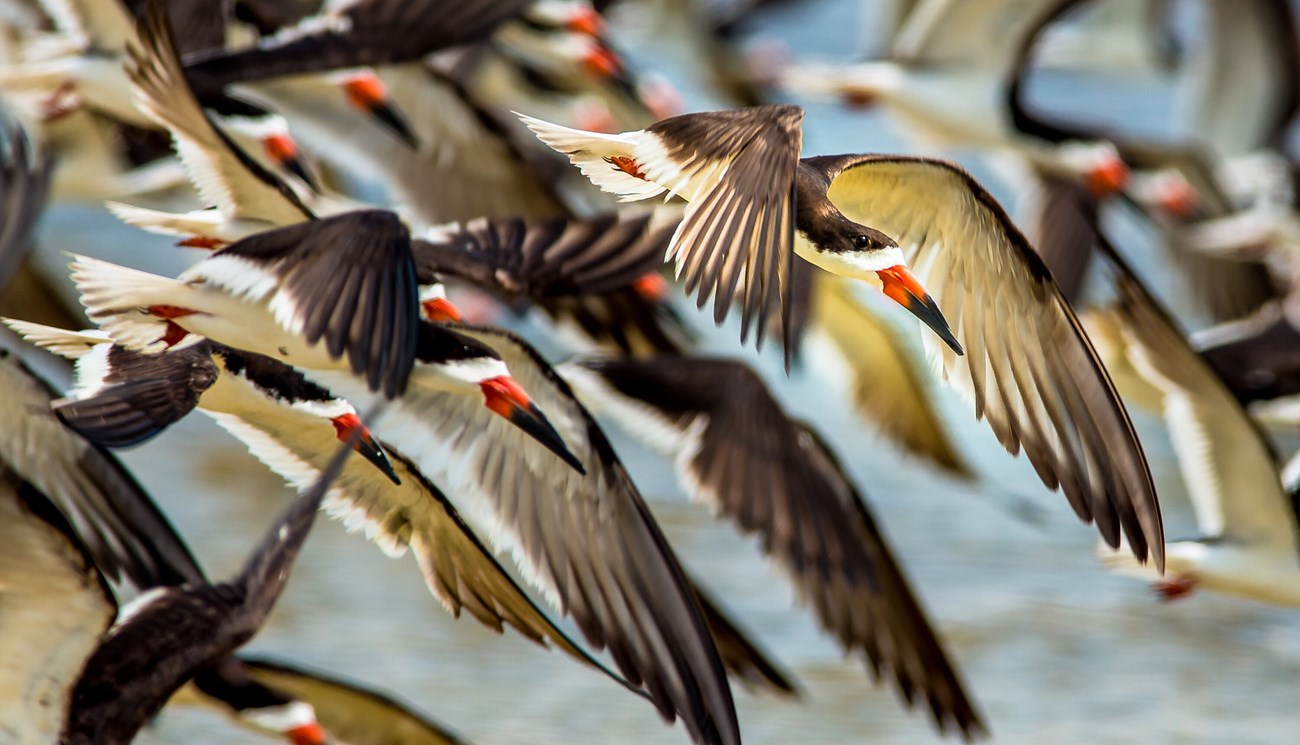
NPS Photo The Black Skimmer is a common bird found on the beaches of Gulf Islands National Seashore. Most notable for their thin bill with a red-orange base and black tip, these birds “skim” the surface of the water in search of their dinner. They prefer to nest in colonies and enjoy loafing on the beach with other birds. Black skimmers are the part of the tern family. The species most common in North America, which nest at the seashore, are Rynchops niger. They only survive along the shorelines, living around 5-9 years. They can fly up to 10-20 mph and will coordinate their movements when flying in flocks. Adult black skimmers have a wingspan of 44 inches and a height of 18 inches. They have black heads with long black wings and a white underbelly. Young black skimmers are white with black and gray spots and small yellow beaks.
These magnificent birds’ diet consists of different types of small fish that swim near the water’s surface and will include killifish, anchovies, pipefish, herring, and young mullet. Black skimmers use their knife-thin lower bill to “skim” the water for fish, and when they feel they have caught one, they use their powerful top beak to slam down on it. Typically, they choose calm waters and will not skim farther than six feet offshore. Their vertical pupils reduce glare from the sun allow them to hunt during the day, but they also also scavenge at night since their dominant sense is touch. Black skimmers are monogamous continuing to mate with the same partner in following seasons. They nest in colonies close to the water, typically on sandbars, and can occupy the same area year after year. Yet, since they lay their eggs in the sand, their eggs are often predated by gulls, raccoons, or are disturbed by human activity. Rising tides also pose a threat since eggs can only survive in saltwater for a few hours or freshwater for a day.
Female black skimmers often lay 4-5 blue eggs with black spots. Both partners will take turns incubating the eggs. Since the eggs are laid in open sand, they need to be constantly shaded from the sun. Black skimmer eggs take about 22-24 days to hatch and both the male and female feed the chicks by regurgitation. In two and a half weeks, black skimmers take their first flight and by week five, they are fully fledged and flying, but their parents still feed them until they perfect their feeding technique about two weeks later. In two to four years’ time, these chicks will be full-fledged adults and will start breeding. During shorebird nesting season at Gulf Islands National Seashore, March – September, some areas around active nests are temporarily closed to visitors and speed limits on park roads are reduced to 25 miles per hour. As you visit the park, help us protect these fantastic fliers by observing the 25 mph speed limit and not entering bird closure areas. You can also show your support with a Save a Chick magnet. Free magnets are available at park entrance stations and park headquarters starting in March, while supplies last.
|
Last updated: April 8, 2020
